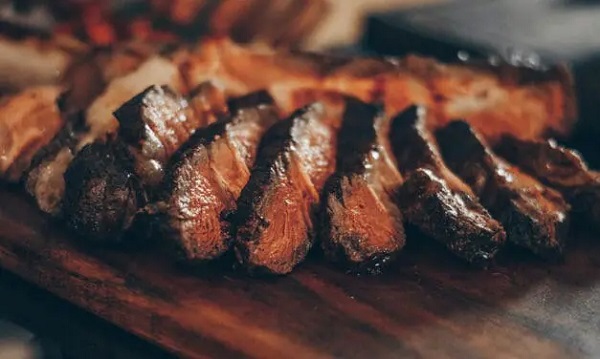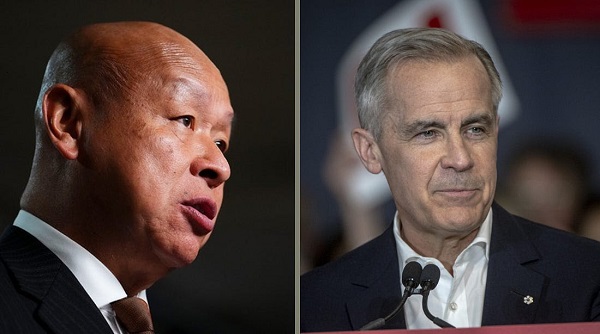Uncategorized
Middle schoolers are now using AI to create ‘deepfake’ pornography of their classmates

From LifeSiteNews
It’s happening all over the world: a generation weaned on hardcore pornography is increasingly enabled by AI technology to create imagery of people they know personally.
A recent news story out of Alabama should be getting far more attention than it is, because it is a glimpse into the future. Middle school students are using artificial intelligence (AI) to create pornographic images of their female classmates:
A group of mothers in Demopolis say their daughters’ pictures were used with artificial intelligence to create pornographic images of their daughters. Tiffany Cannon, Elizabeth Smith, Holston Drinkard, and Heidi Nettles said they all learned on Dec. 4 that two of their daughters’ male classmates created and shared explicit photos of their daughters. Smith said since last Monday, it has been a rollercoaster of emotions.
“They’re scared, they’re angry, they’re embarrassed. They really feel like why did this happen to them,” said Smith. The group of mothers said there is an active investigation with Demopolis Police. However, they wish for the school district to take action. They believe this is an instance of cyberbullying and there are state laws and policies to protect their girls.
“We have laws in place through the Safe School’s law and the Student Bullying Prevention Act, which says that cyberbullying will not be tolerated either on or off campus,” said Smith. “It takes a lot for these girls to come forward, and they did. They need to be supported for that. Not just from their parents, but from their school and their community,” said Nettles.
The school hasn’t given many details yet, with the Demopolis City Schools Superintendent Tony Willis saying in a statement that there is little they can do: “The school can only address things that happen at school events, school campus on school time. Outside of this, it becomes a parent and police matter. We sympathize with parents and never want wrongful actions to go without consequences – our hearts and prayers go out to all the families hurt by this. That is why we have assisted the police in every step of this process.”
We’ll be seeing a lot more of this in the years ahead, as a generation weaned on hardcore pornography is increasingly enabled by technology to create imagery of people they know personally. The rise of sexting took pornography and made it personal – educators and law enforcement are still grappling with how to curtail the nearly ubiquitous practice of sending and receiving intimate images, the majority of which are then shared with others. Many of these images, by virtue of the age of the students involved, constitute child pornography. AI-generated pornography will create a whole laundry list of other disturbing issues to deal with.
A quick scan of recent headlines will give you a sense of where this is headed. From Fortune: “‘Nudify’ apps that use AI to undress women in photos are soaring in popularity, prompting worries about non-consensual porn.” These apps allow people to “digitally undress” people they know and thus create nonconsensual pornography of girls and women. These apps have already acquired millions of users.
From MIT Technology Review: “A high school’s deepfake porn scandal is pushing US lawmakers into action.” At a New Jersey high school, boys had used AI to “create sexually explicit and even pornographic photos of some of their classmates,” with up to 30 girls being impacted. The sense of violation felt by the victims is profound.
From CNN: “Outcry in Spain as artificial intelligence used to create fake naked images of underage girls.” From the story: “Police in Spain have launched an investigation after images of young girls, altered with artificial intelligence to remove their clothing, were sent around a town in the south of the country. A group of mothers from Almendralejo, in the Extremadura region, reported that their daughters had received images of themselves in which they appeared to be naked.”
One girl was blackmailed by a boy with a doctored image of herself. Another cried to her mother: “What have they done to me?”
From the Washington Post: “AI fake nudes are booming. It’s ruining real teens’ lives.” From the story: “Artificial intelligence is fueling an unprecedented boom this year in fake pornographic images and videos. It’s enabled by a rise in cheap and easy-to-use AI tools that can “undress” people in photographs — analyzing what their naked bodies would look like and imposing it into an image — or seamlessly swap a face into a pornographic video.”
Those are just a few examples of dozens of stories from the past few months. The pornography crisis is being exacerbated further by AI, once again highlighting the unfortunate truth of a joke in tech circles: First we create new technology, then we figure out how to watch porn on it. The porn industry has ruined an untold number of lives. AI porn is taking that to the next level. We should be prepared for it.
Business
Beef is becoming a luxury item in Canada

This article supplied by Troy Media.
 By Sylvain Charlebois
By Sylvain Charlebois
Canadian beef prices have surged due to a shrinking cattle herd, high transportation costs, and potential market collusion
With summer weather settling in, Canadians are returning to a familiar ritual—ring up the barbecue. But as they approach the meat counter, many are faced with shockingly high prices. This year, the meat aisle has become a case study in supply-side economics and market dysfunction, leaving
consumers to wonder how this all came to be.
Since January, according to Statistics Canada, beef prices have surged dramatically. Striploin is up 34.2 per cent, top sirloin 33.7 per cent, and rib cuts nearly 12 per cent. Pork rib cuts and chicken breasts have each risen 5.9 per cent, while even meatless burger patties are 6.8 per cent more
expensive. Beef has led the way in these increases, and its dominance in the price hikes is striking. What’s particularly concerning is that it’s not just one cut of beef—virtually every option has seen a dramatic jump, putting pressure on Canadian consumers who were already grappling with rising food costs.
The cause behind these increases lies in Canada’s shrinking beef cow inventory, now at just 3.38 million head—the lowest since 1989. This represents a 1.2 per cent drop from last year, but it signals much more than a cyclical decline. Many cattle producers, facing an increasingly volatile market, are choosing to exit the industry while prices are favourable. Others are opting to reinvest in less risky sectors or even shift entirely to crop production, leaving the beef industry in a precarious state. In short, Canada’s beef industry is retreating, and with that retreat comes rising prices, fewer available cattle, and growing uncertainty.
South of the border, the U.S. is seeing a similar trend, but far less severe. According to the United States Department of Agriculture, the
American beef cow herd declined by just 0.5 per cent to 27.9 million head. This relatively modest drop, coupled with less disruption in their production practices, has resulted in more stable prices.
Over the past year, U.S. boneless sirloin steak rose 5.7 per cent, compared to a staggering 22 per cent in Canada. Ground beef saw a 10.8 per cent increase in the U.S., but 23 per cent in Canada. The price difference between the two countries is stark, and Canadians are feeling the inflationary pressure much more acutely.
There are several factors contributing to the price hikes: Canada’s vast geography, high transportation costs, a limited number of federally licensed beef processors, carbon pricing, and higher labour costs. Carbon pricing, in particular, has added a burden to sectors like beef production, where transportation costs are high. Regulations and logistical inefficiencies add to the costs, driving up prices for retailers and, ultimately, consumers.
This combination of factors is having a compounding effect on the price of beef, making it increasingly out of reach for many.
But there’s another possibility we can’t ignore: potential collusion within the industry. In Canada, a small number of large processors control much of the beef supply, which gives them significant influence over prices. The U.S. government has taken strong action against price-fixing among major meat packers like JBS, Tyson Foods, Cargill, and National Beef, leading to multimillion-dollar settlements. In Canada, however, the Competition Bureau has remained largely silent on similar concerns, allowing the possibility of price-fixing to persist unchecked. Perhaps it’s time for Canada to follow the U.S. lead and ensure the beef industry is held accountable for its actions.
The consequences of these rising costs are already evident. According to IBISWorld, Canadian per capita beef consumption fell by 7.1 per cent in 2023 and is expected to drop another 2.1 per cent in 2024. This isn’t merely a shift in dietary preferences—this is a structural change in consumer behaviour. Beef is becoming increasingly viewed as a luxury item, with many budget-conscious households turning to ground beef as a more affordable option. For many Canadians, beef is no longer a staple food but rather an occasional indulgence, reserved for special occasions or holiday meals.
This shift is unfortunate. Beef remains one of the most natural, sustainable sources of protein available to Canadians. Ranchers and processors have made significant strides in improving environmental stewardship, animal welfare, and food safety, often without recognition. Beef is not only nutritionally dense but also supports rural economies and provides a level of traceability few other protein sources can offer.
For many Canadian families, a summer steak on the grill is becoming more of a splurge than a staple. While Canadians will continue to enjoy beef, the frequency and volume of consumption will likely diminish.
Barbecue season hasn’t disappeared, but for many, it’s starting to look a little different: more sausages, more chicken, and fewer striploins. A shame, really, for a product that offers so much more than just taste.
Dr. Sylvain Charlebois is a Canadian professor and researcher in food distribution and policy. He is senior director of the Agri-Food Analytics Lab at Dalhousie University and co-host of The Food Professor Podcast. He is frequently cited in the media for his insights on food prices, agricultural trends, and the global food supply chain.
Troy Media empowers Canadian community news outlets by providing independent, insightful analysis and commentary. Our mission is to support local media in helping Canadians stay informed and engaged by delivering reliable content that strengthens community connections and deepens understanding across the country.
Uncategorized
Poilievre on 2025 Election Interference – Carney sill hasn’t fired Liberal MP in Chinese election interference scandal

From Conservative Party Communications
“Yes. He must be disqualified. I find it incredible that Mark Carney would allow someone to run for his party that called for a Canadian citizen to be handed over to a foreign government on a bounty, a foreign government that would almost certainly execute that Canadian citizen.
“Think about that for a second. We have a Liberal MP saying that a Canadian citizen should be handed over to a foreign dictatorship to get a bounty so that that citizen could be murdered. And Mark Carney says he should stay on as a candidate. What does that say about whether Mark Carney would protect Canadians?
“Mark Carney is deeply conflicted. Just in November, he went to Beijing and secured a quarter-billion-dollar loan for his company from a state-owned Chinese bank. He’s deeply compromised, and he will never stand up for Canada against any foreign regime. It is another reason why Mr. Carney must show us all his assets, all the money he owes, all the money that his companies owe to foreign hostile regimes. And this story might not be entirely the story of the bounty, and a Liberal MP calling for a Canadian to be handed over for execution to a foreign government might not be something that the everyday Canadian can relate to because it’s so outrageous. But I ask you this, if Mark Carney would allow his Liberal MP to make a comment like this, when would he ever protect Canada or Canadians against foreign hostility?
“He has never put Canada first, and that’s why we cannot have a fourth Liberal term. After the Lost Liberal Decade, our country is a playground for foreign interference. Our economy is weaker than ever before. Our people more divided. We need a change to put Canada first with a new government that will stand up for the security and economy of our citizens and take back control of our destiny. Let’s bring it home.”
-

 Business19 hours ago
Business19 hours agoCarney’s European pivot could quietly reshape Canada’s sovereignty
-

 Alberta19 hours ago
Alberta19 hours agoAlberta’s grand bargain with Canada includes a new pipeline to Prince Rupert
-

 Crime1 day ago
Crime1 day agoManhunt on for suspect in shooting deaths of Minnesota House speaker, husband
-

 Bruce Dowbiggin3 hours ago
Bruce Dowbiggin3 hours agoWOKE NBA Stars Seems Natural For CDN Advertisers. Why Won’t They Bite?
-

 Energy4 hours ago
Energy4 hours agoCould the G7 Summit in Alberta be a historic moment for Canadian energy?
-

 Crime3 hours ago
Crime3 hours agoMinnesota shooter arrested after 48-hour manhunt
-

 conflict4 hours ago
conflict4 hours ago“Evacuate”: Netanyahu Warns Tehran as Israel Expands Strikes on Iran’s Military Command
-

 Aristotle Foundation1 hour ago
Aristotle Foundation1 hour agoThe Canadian Medical Association’s inexplicable stance on pediatric gender medicine




